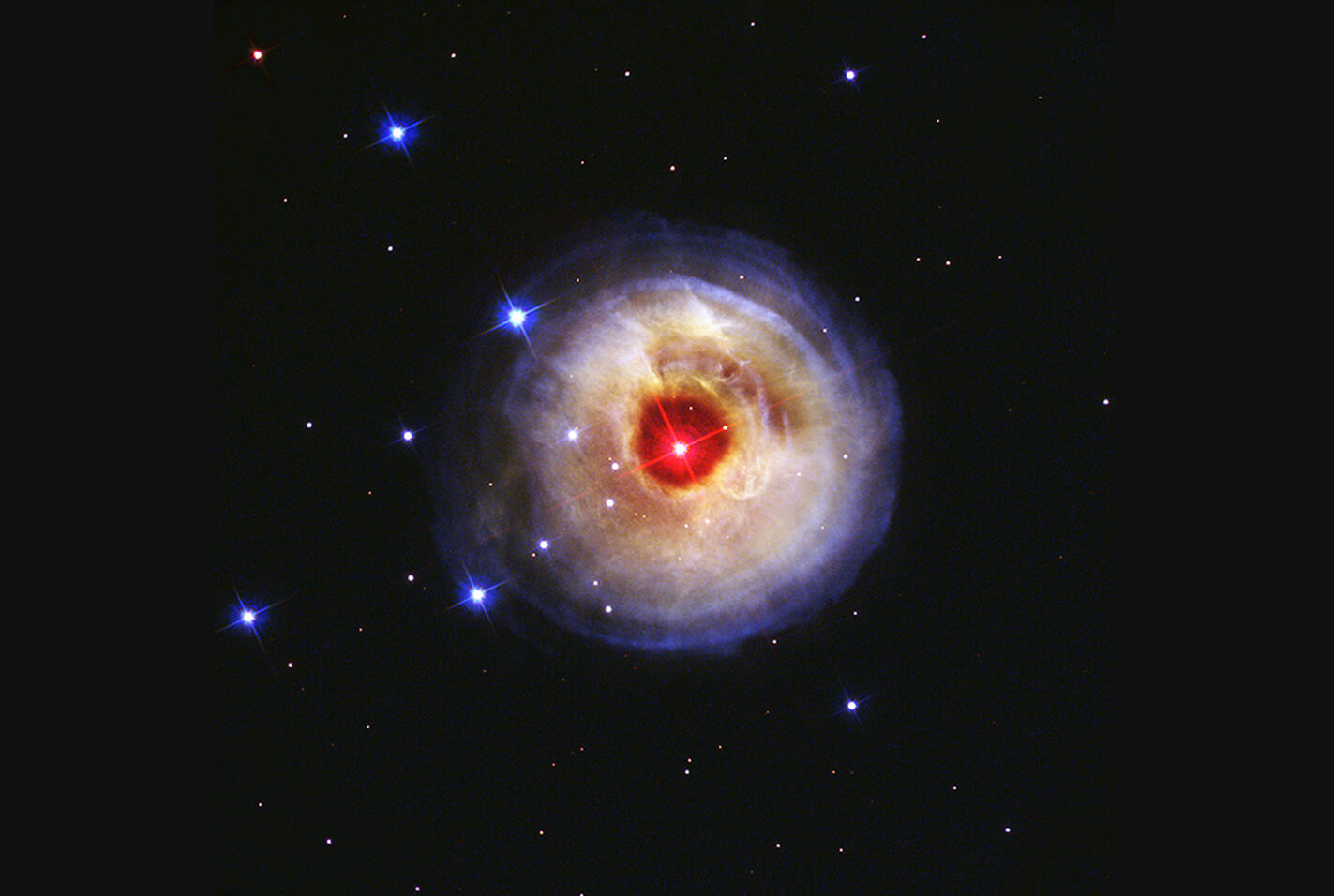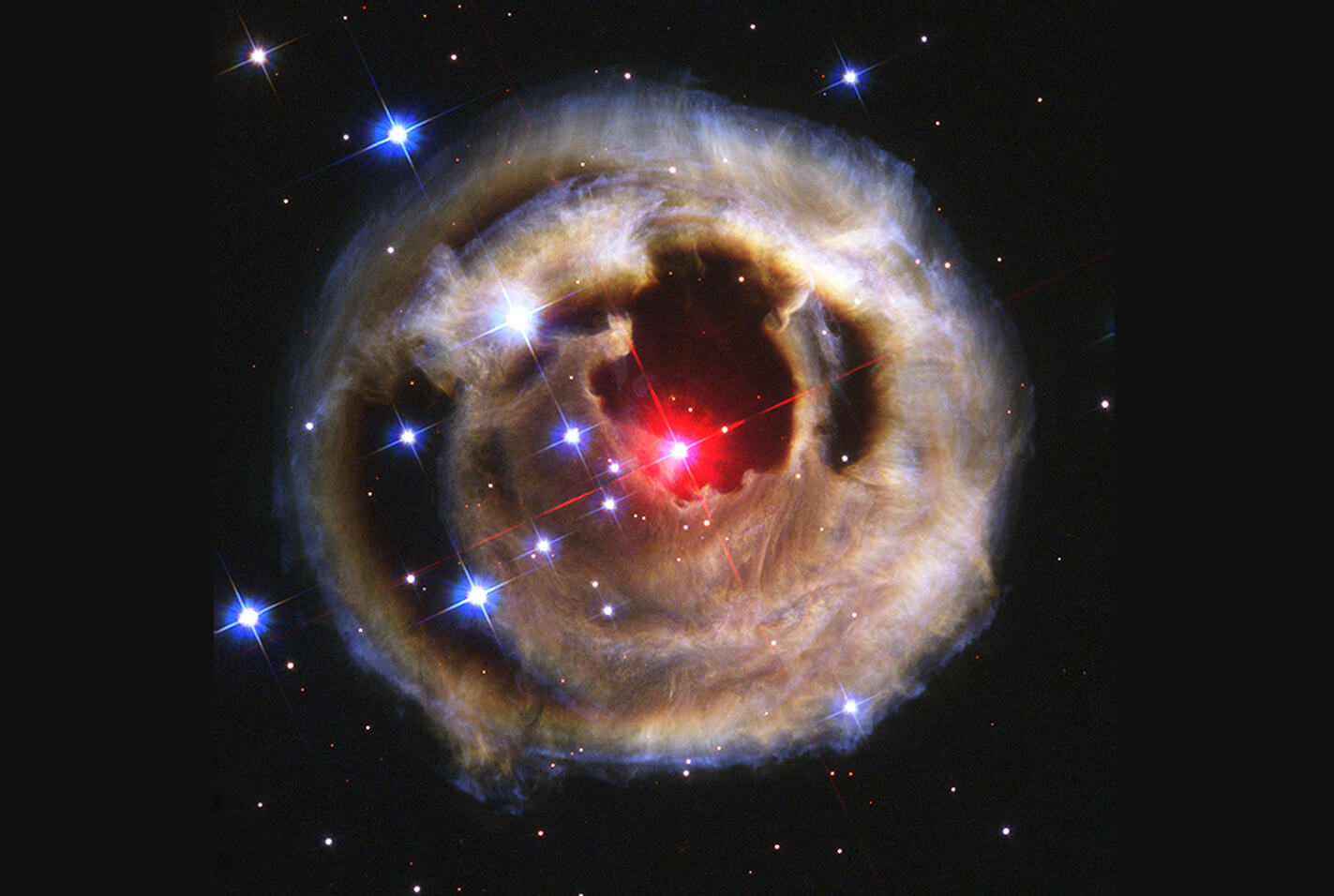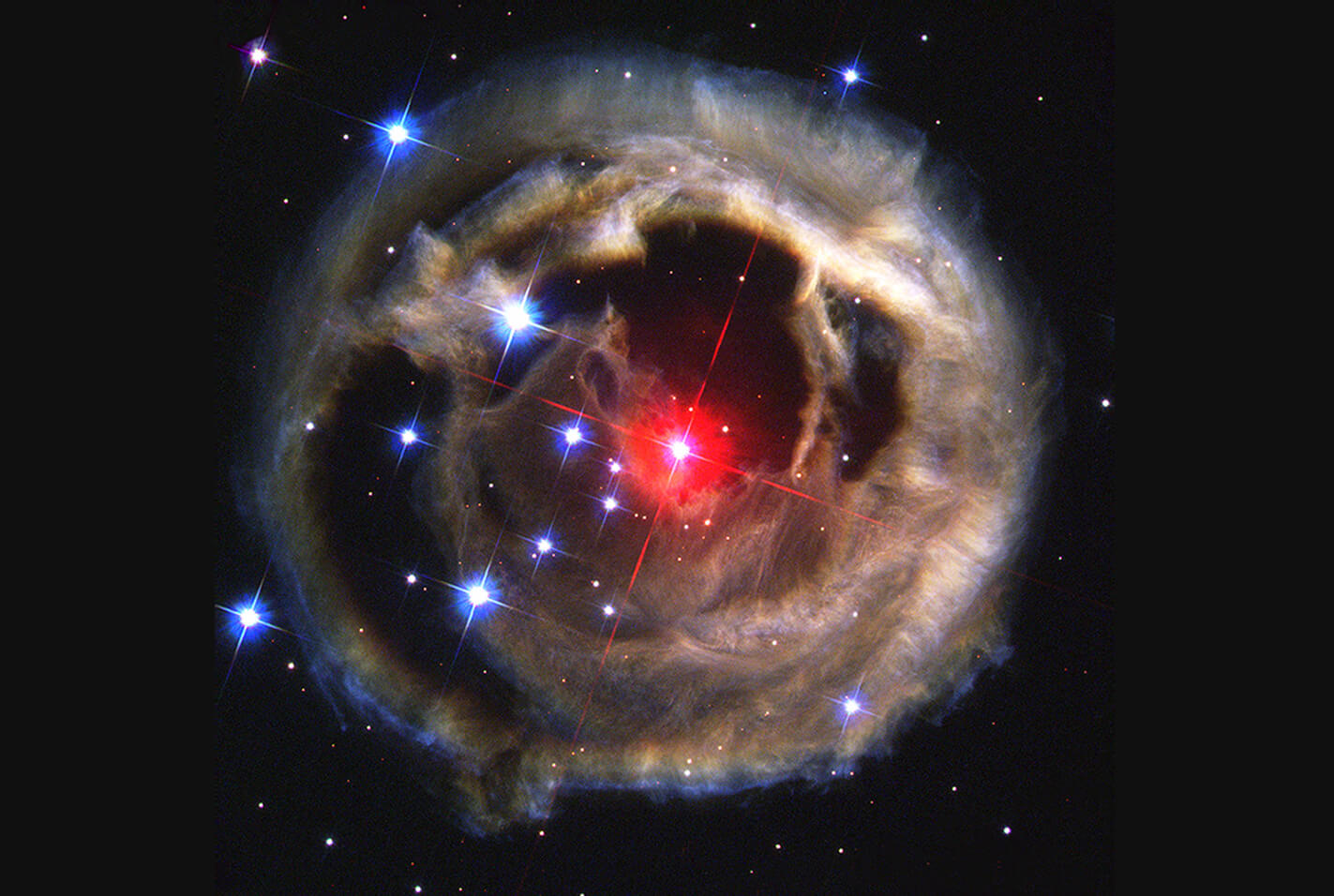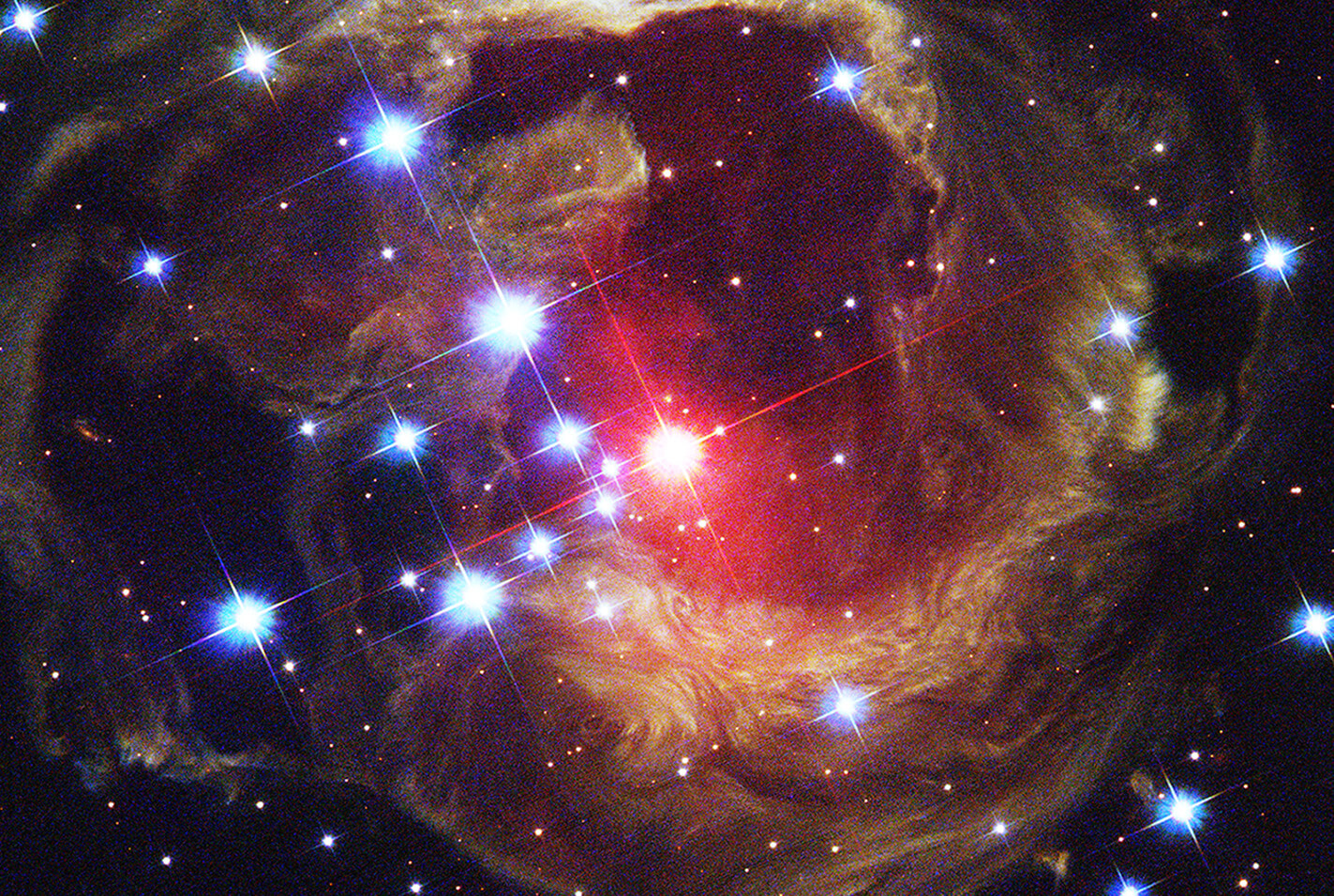Interactive Overview
Slider Interactive: A series of color images showing star V838 Monocerotis and its surroundings on four different dates. Below the caption is a horizontal slider bar with four labeled stops and a solid white circle. Dragging the white circle right and left along the slider bar causes the image, labels, and caption to change. The change occurs gradually as one image, along with its associated captions and labels, fades out and the next fades in. A toggle button to the upper right of the image turns the image labels off and on. Labels are in the form of text with arrows pointing to specific features in the image.
Slider Stops
From left to right, the slider stops are labeled: May 2002, October 2002, December 2002, and October 2004.
Summary of Slider Stops
All four stops show a bright red star in the center, surrounded by a cloud of dust, with bright blue-white stars in the background. The positions of the stars stay the same while the apparent size and shape of the cloud of dust changes.
Sliding left to right reveals the following:
- “May 2002” stop shows a bright red star in the center surrounded by a spherical cloud of brown dust. This is the initial image shown when the interactive is loaded.
- “October 2002” stop shows the same star within what appears to be a much larger, expanded sphere of dust.
- In the “December 2002” stop, the sphere of dust appears to have expanded even more.
- In the “October 2004” stop, the dust extends beyond the edge of the image.
Stop 1: May 2002
Image Description: May 2002
Image of an object that resembles an eyeball: a brownish sphere of dust with a bright red-white star in the middle. The star has four diffraction spikes radiating out from the center. A small area immediately surrounding the star appears to be empty, revealing the dark background of space. Beyond this, the star is surrounded by a spherical cloud of light brown dust. The dust has swirling, fluffy-like texture, with some regions denser and others more transparent, with background stars shining through. The cloud appears to have a radial symmetry – it looks like it is composed of a series of overlapping concentric rings of slightly different color and transparency. In general, the density of the material appears to decrease with distance from the central star. The outermost rings have a transparent bluish color.
Labels: May 2002
There are two text labels. The glowing red spot with diffraction spikes in the center is labeled “Red supergiant star.” A label pointing to the wispy, blue ring on the exterior of the light brown-white dust area reads “Illuminated dust.”
Caption: May 2002
As the central star in V838 Monocerotis suddenly brightened in 2002, its pulse of light illuminated the surrounding dust.
Stop 2: October 2002
Image Description: October 2002
Image of the same object five months later: a spherical cloud of brownish-white dust surrounding a bright red-white star, with blue-white stars in the background. The stars are in the same positions as in the May 2002 image, but look a little brighter. The cloud of dust appears to have expanded out to about twice the distance from the star. The cloud still has a radial structure, but there are more areas that appear to be empty, revealing the black background of space. The gaps are asymmetric, with a large gap in the lower left and another near the central star, offset slightly to the upper right. As in the May 2002 image, the outermost edge of the cloud has a transparent bluish color.
Labels: October 2002
One text label pointing to the blueish outermost ring at the lower right edge of the cloud reads “Newly illuminated dust.”
Caption: October 2002
The dust itself is not rapidly expanding, but as the light travels, it illuminates previously ejected dust farther away.
Stop 3: December 2002
Image Description: December 2002
Image of the same object two months later than the previous stop: a spherical cloud of brownish-white dust surrounding a bright red-white star, with blue-white stars in the background. The stars look the same and are in the same positions as in the October 2002 image. The cloud looks very similar in this image to the October image, with a radial structure, large gaps revealing the black background of space, and a thin outer ring of transparent blue. It appears to have expanded a little more, and appears wispier and less compact.
Labels: December 2002
There are two text labels. At the bottom left, the wispy blue ring at the outermost edge of the cloud is labeled “Earliest, blue light emitted by the star.” Reddish brown material along the edge of one of the empty regions in the upper half of the cloud is labeled “Redder light emitted later.”
Caption: December 2002
The light reflects or “echoes” off the dust and then travels to Earth, allowing researchers to capture this incredible scene.
Stop 4: October 2004
Image Description: October 2004
This image reveals the same swath of space, 22 months after the previous stop, with swirls of brownish-white dust surrounding a bright red-white star, and blue-white stars in the background. The stars are in the same positions, but appear brighter than they do in the December 2002 image. The dust now fills most of the image, with the edges extending beyond the field of view. More detail is visible in the dust, with swirling strands and wavy ridges. Some regions are much lighter in color. Some areas appear empty, revealing the dark background of space.
Labels: October 2004
There are two text labels. Toward the left, a gray ridge of dust is labeled “Farther dust reflects new patterns.” A bright blue-white star with diffraction spikes is labeled “Overexposed stars.”
Caption: October 2004
As light leaves the areas closest to the star and travels out, the light echo reveals different patterns in more distant dust.






